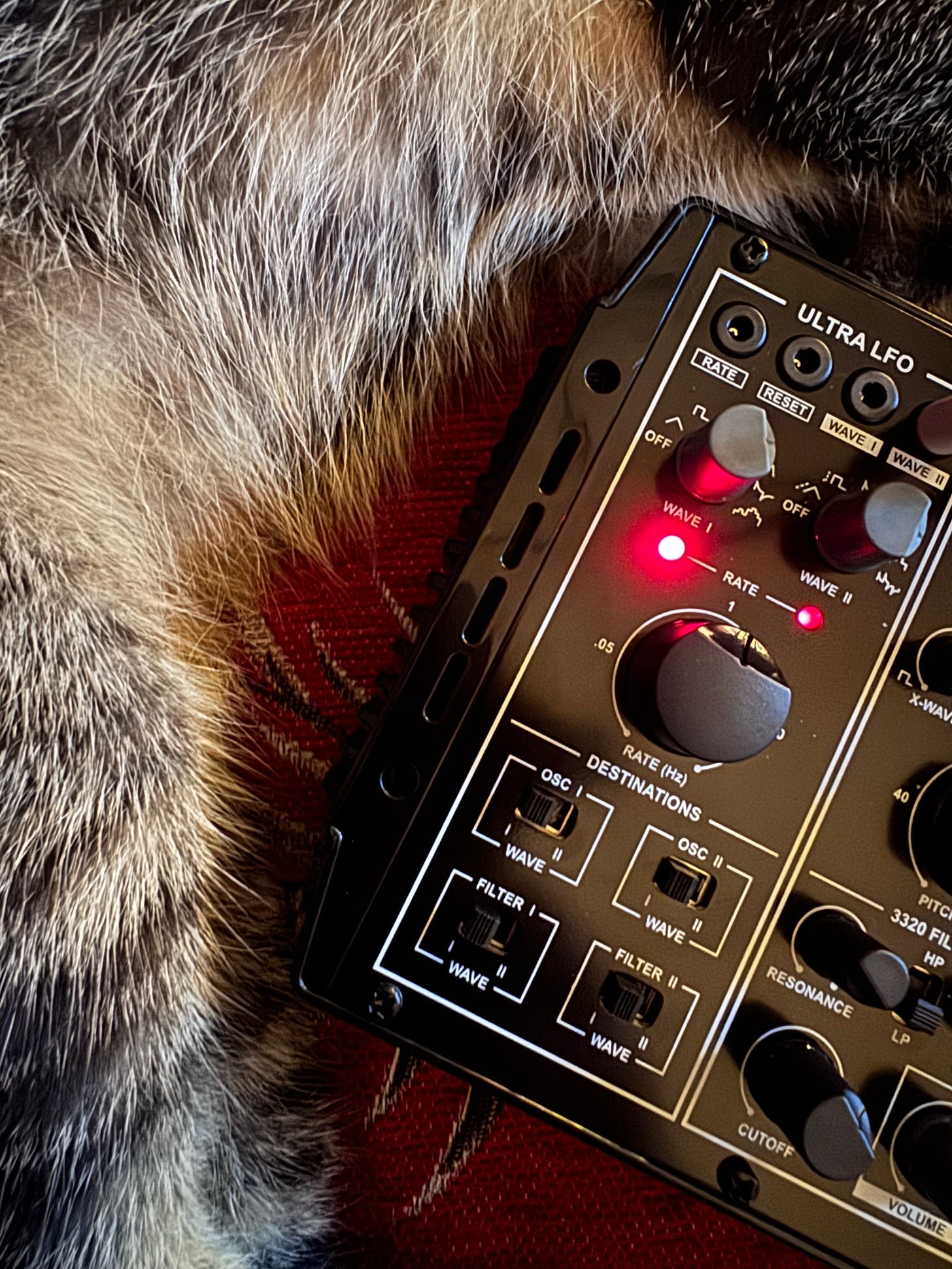Gear Review: Exploring the Stylophone CPM DS-2 in Experimental Cat-Scaping
Let me introduce you to a new member of my sonic laboratory: the Stylophone CPM DS-2 — a quirky, purring little beast of a synthesizer that hums, growls, and pulses like a mechanical feline dreaming in circuitry. It’s not just another analog drone synthesizer. It’s a playground for emotional frequencies, a modular puzzle that rewards intuition over logic, and most importantly — the co-composer in my latest project: “Cat-scaping Lullabies”, a soundscape series for my cat.
First Impressions: Tiny but Mighty (and Modular)
At first glance, the DS-2 feels like a retro-futurist gadget plucked from a 1970s sci-fi film. Compact, mysterious, littered with knobs like alien runes, and somehow already purring through its demo patch before I even plugged it into my main rig. It’s part desktop synth, part Eurorack-compatible module, which means it fits snugly into my chaotic DIY setup between contact mics and broken cassette decks.
The ULTRA LFO section alone is a portal into infinite wobble worlds — dual waveforms including double-speed triangles and random sample & hold make modulation feel like sculpting fog with your hands. It doesn’t think in “melodies” — it thinks in motion, texture, and mood.
Soundscapes for Cats: Method of Feline Composition
Here’s how I approached it: my cat, is sensitive to low frequencies, and fascinated by soft irregular patterns — like rain, ceiling fans, and modular glitches. So I used the DS-2 as a generative engine of calm chaos.
DRONE 1/II section: I started with a slow pitch drift using one of the drone oscillators, tuned just slightly off center. The CV depth knob became a favorite, adding subtle modulations that felt like a tail swishing in sleep.
DELAY: I dialed in a soft vintage delay with light clipping — not enough to distract, just enough to make the textures feel “alive,” like they’re breathing.
REVERB: A quiet hero here. The reverb on the DS-2 is digital, yes — but haunting. I set it to a low MIX level, so the sound felt like it was whispering from the next room. The kind of tail a ghost would have if it purred.
Modulated LFO to MIXER: I routed the LFO into the mixer path, allowing me to slowly evolve between layers — one layer for soothing pulse, another for harmonic overtones, another just static glitch crackle.
OSC CHOKE switch: Oh, what a discovery! When you toggle this, it starves the oscillator momentarily — creating a yawning “stretch” effect that my cat reacted to by tilting his head and blinking slowly. Approval granted.
Why It Works: Emotion Through Machine
What I love about the DS-2 is that it doesn’t rush you. It invites you to listen deeply, to make mistakes softly, to get lost in a modulation path that leads somewhere unexpected. There’s no pressure to “finish a track” — instead, it rewards presence. In creating for my cat, I found myself listening with him. When he moved, I modulated. When he dozed off, I let the mix self-oscillate and loop itself into oblivion.
This machine taught me that music for another species isn’t about harmony or hooks — it’s about textures that feel safe, strange, and slow.
Tips for Fellow Sonic Explorers
Don’t overpatch. Let one section sing at a time.
Random S&H in the LFO is a powerful tool for subtle unpredictability.
Use the RESONANCE RANGE switch to make small changes with massive psychoacoustic effect.
For pet compositions, use a low-volume loop and observe reactions before layering.
Final Reflection: Stylophone as Familiar
To me, the CPM DS-2 is not just gear — it’s a familiar. A little analog entity that helps me think sideways. It responds to mood more than plan. And when used with tenderness, it can translate love into sound waves.
My cat sleeps soundly now to drone lullabies, and I? I’ve found a new way to collaborate — with machine, with animal, with silence itself.
Let the cats be our critics. And let the machines meow.
Dr.Kamal Sabran






